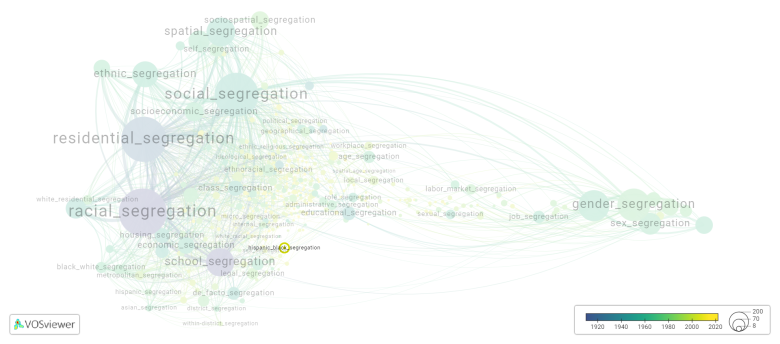Hispanic black segregation
Date and country of first publication[1]
2015
United States
Definition
Hispanic-black segregation refers to the separation of Hispanic and Black communities in various aspects of society, such as residential neighborhoods, schools, and workplaces. Despite the shared experiences of discrimination and marginalization, there are often disparities and divisions between these two minority groups.
Historically, Hispanic and Black populations have faced different struggles and challenges in the United States. For example, African Americans have faced a long history of racial segregation and systemic racism, dating back to the era of slavery and through the Jim Crow era. Latino communities, on the other hand, have faced challenges related to immigration, language barriers, and discrimination based on their ethnic backgrounds.
The patterns of residential segregation often perpetuate socio-economic disparities between Hispanics and Blacks. Many neighborhoods in the United States remain racially or ethnically homogenous, where one group is significantly overrepresented compared to the other. This segregation can result in unequal access to resources, including quality education, healthcare, and job opportunities.
In schools, there may also be separate patterns of segregation between Hispanic and Black students. This can result from various factors, including neighborhood demographics, school district zoning, and language barriers. Such segregation can perpetuate educational disparities and hinder opportunities for social integration and cross-cultural understanding.
Workplace segregation can also be observed, where Hispanic and Black individuals may be concentrated in different industries or occupations. This can lead to wage gaps and unequal representation in higher-paying jobs, reinforcing existing socio-economic inequalities.
To address the issue of Hispanic-black segregation, efforts should focus on promoting integration and equal access to opportunities for both groups. This can include policy changes to combat housing discrimination, desegregate schools, and promote diversity and inclusion in workplaces. Furthermore, fostering dialogue and understanding between Hispanic and Black communities can contribute to breaking down barriers and promoting social cohesion.
Synonyms
The following terms are synonymous with hispanic black segregation:
black hispanic segregation.
References and literature addressing this segregation form under these synonymous terms can be found below.
See also
Related segregation forms
Hispanic black segregation is frequently discussed in the literature with the following segregation forms:
school segregation, hispanic segregation

This visualization is based on the study The Multidisciplinary Landscape of Segregation Research.
For the complete network of interrelated segregation forms, please refer to:
References
Notes
- ↑ Date and country of first publication as informed by the Scopus database (December 2023).
Hispanic black segregation appears in the following literature
Lichter D.T., Parisi D., Taquino M.C. (2015). Spatial Assimilation in U.S. Cities and Communities? Emerging Patterns of Hispanic Segregation from Blacks and Whites. Annals of the American Academy of Political and Social Science, 660(1), 36-56. SAGE Publications Inc..https://doi.org/10.1177/0002716215572995
Fiel J. (2015). Closing ranks: Closure, status competition, and school segregation. American Journal of Sociology, 121(1), 126-170. University of Chicago Press.https://doi.org/10.1086/682027
